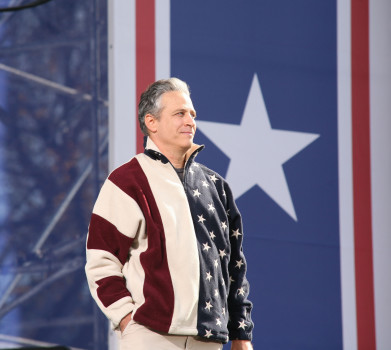This year, hundreds of Minnetonka students will be eligible to vote in the 2012 presidential election. There is hope that these young voters will be informed and excited to fulfill their civic duty, but these young adult voters joining the voting ranks this year face the stigma of being plugged-in to their iPods but out of the political loop. It seems like kids these days get their information from Facebook and comedy shows more so than the good old newspaper or evening news.
In particular, The Daily Show with Jon Stewart and The Colbert Report with Stephen Colbert have been cited as great voids of political misinformation for young adults. The commonly cited statistic claims that the majority of young people get their political news from comedy shows such as The Daily Show or SNL. This tidbit is usually shared with a note of disbelief or resignation – making it apparent that these shows are lesser sources for political information. Politics are no joke, and comedians are certainly not reliable sources, right? Not necessarily.
Besides noting that this generalization is incorrect (the actual findings of the Pew Research study stated 47% of people under age 30 are “informed at least occasionally” about presidential campaigns by comedy shows), it doesn’t matter how people receive information, so long as they receive it at all. While it’s important to note that the majority of young people, according to the study, get their political information from more traditional news sources, those who go for the funny and less traditional are not necessarily making the wrong or lesser choice.
Does it really matter if a student learned the names of the candidates from the Colbert Report rather than The Star Tribune? Especially when, according to a different study, only 49% of people 18-29 voted in the 2004 presidential elections. In order to encourage young voters to turn out, they must be aware of and interested in the race. Comedy shows provide both awareness and entertainment that might spark greater political involvement.
Comparatively, comedy shows are also more accessible and more interesting to young people. The same Pew study found that, across all ages, comedy – not the “latest headlines” or “in-depth reporting”- is the largest draw of The Daily Show and The Colbert Report. It also determined that a greater percentage of people ages 18-29 rely regularly on The Daily Show than some more conventional news sources such as the morning news or the New York Times. So while comedy is certainly the first priority of these shows, many young adults do use them as a source of news. Yes, The Daily Show and The Colbert Report may not be as conventional as traditional news sources, but it cannot be disputed that these comedy shows are better than nothing.
It is no question that Jon Stewart and Stephen Colbert have biases. However, news sources (most notoriously Fox News or Countdown) often have an apparent bias as well. Comparatively, Stewart and Colbert seem to be less biased than other political exponents or hosts. Outspoken host Rush Limbaugh, for example, is much more prone to political attacks and blatant bias than either Stewart or Colbert. It could also be argued that Stewart and Colbert’s humor obscures the hard facts. But in politics especially, hard facts are seemingly difficult to come by. Speeches and statements are full of ambiguous rhetoric, and comics, if anything, bring awareness to this.
The idea of “crazy kids” electing our next president based on a bunch of jokes is daunting, but totally untrue. Late-night network comedy shows certainly entertain, but they also inform. Though they face skepticism, I have faith that the members of the “Colbert Nation” and viewers of the The Daily Show are informed members of the American nation and will go to polls in November as informed voters.































